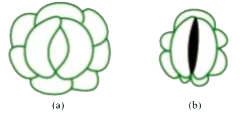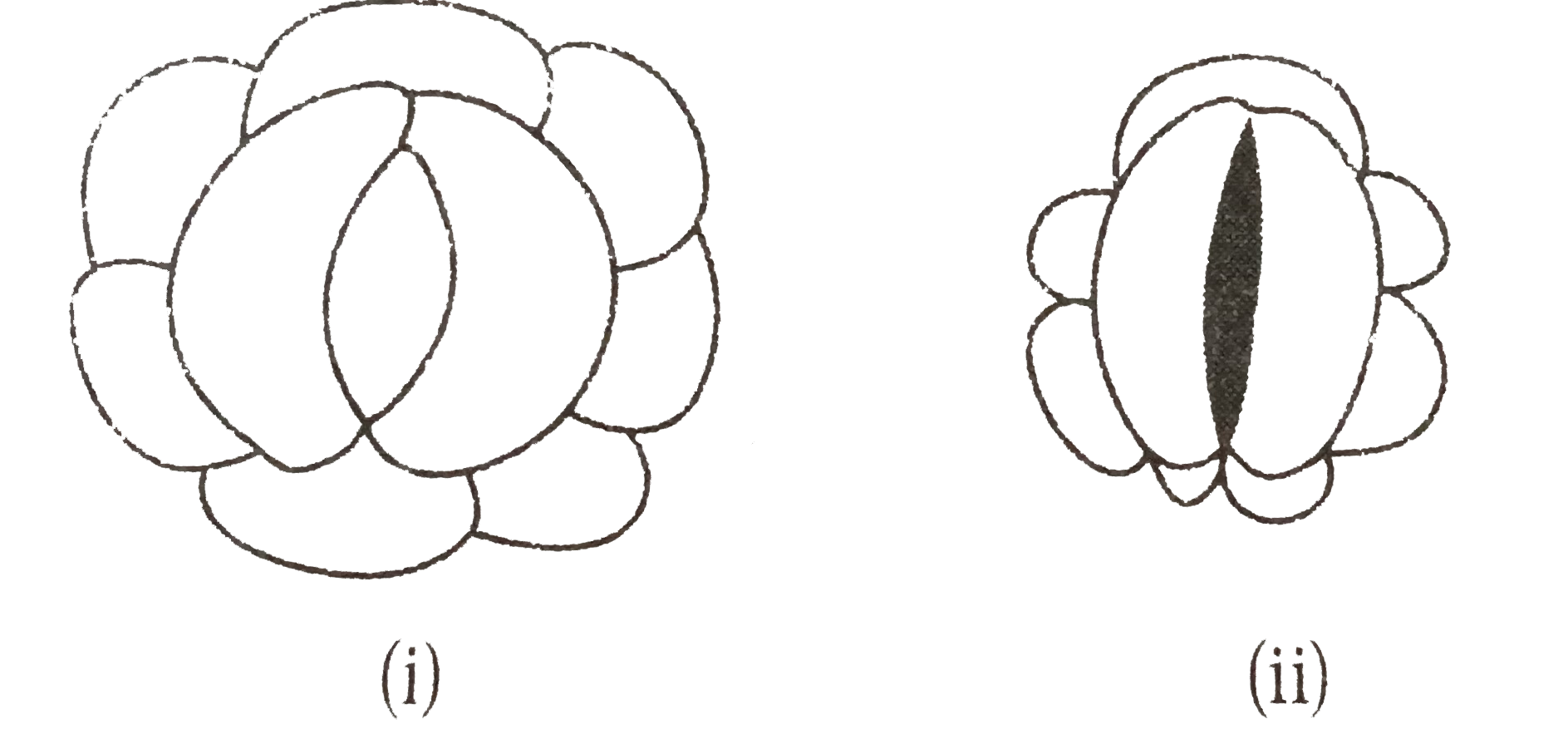The element which plays an important role in opening and closing of stomata is
Cl
K
P
Ca
The correct Answer is:B
To solve the question regarding the element that plays an important role in the opening and closing of stomata, we can follow these steps:
1. Identify the Question: The question asks which element is crucial for the opening and closing of stomata in plants.
2. Review the Options: The options provided are:
- a. Chlorine
- b. Potassium
- c. Phosphorus
- d. Calcium
3. Analyze Each Option:
- Chlorine: While chlorine is important for osmotic regulation in plants, it is not directly responsible for the opening and closing of stomata.
- Potassium: Potassium ions are essential for the regulation of stomatal movement. They help in the uptake of water by guard cells, leading to turgor pressure changes that open and close the stomata.
- Phosphorus: Phosphorus is mainly involved in energy transfer and nutrient movement within the plant, but it does not play a direct role in stomatal function.
- Calcium: Calcium is important for cell wall structure and stability, but it does not directly control the opening and closing of stomata.
4. Determine the Correct Answer: Based on the analysis, Potassium (option b) is the element that plays a significant role in the opening and closing of stomata.
5. Conclusion: Therefore, the correct answer to the question is b. Potassium.
- a. Chlorine
- b. Potassium
- c. Phosphorus
- d. Calcium
- Chlorine: While chlorine is important for osmotic regulation in plants, it is not directly responsible for the opening and closing of stomata.
- Potassium: Potassium ions are essential for the regulation of stomatal movement. They help in the uptake of water by guard cells, leading to turgor pressure changes that open and close the stomata.
- Phosphorus: Phosphorus is mainly involved in energy transfer and nutrient movement within the plant, but it does not play a direct role in stomatal function.
- Calcium: Calcium is important for cell wall structure and stability, but it does not directly control the opening and closing of stomata.
Topper's Solved these Questions
Similar Questions
Observe the diagram and answer the following :

(a) Which of these guard cells show a higher water content, A or B ?
(b)Are these types of guard cells found in monocots or dicots ?
(c) Name the element which play an important role in the opening and closing of stomata.
View SolutionObserve the diagram and answer the following.

(a) Are these types of guard cells found in monocots or dicots ?
(b) Which of these shows a higher water content (i) or (ii) ?
(c) Which element plays an important role in the opening and closing of stomata ?
View Solution
Knowledge Check
Which element plays an important role in opening and closing of stomata?
APBNCKDCaOpening and closing of stomata is due to
Ahormonal change in guard cellsBchange in turgo pressure of guard cellsCgaseous exchangeDrespirationOpening and closing of stomata is due to
Apressure of gases inside the leavesBchanges of turgor pressure in guard cellsCeffect of hormonesDtheir genetic constitution
RNA plays an important role in :
View SolutionWhich of the following essential elements plays an important role in opening and closing of stomata?
View SolutionOpening and closing of stomata is due to the
View SolutionFSH plays an important role in :-
View SolutionElements involved in opening and closing of stomata is
View Solution
